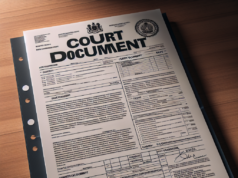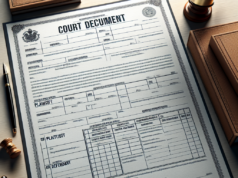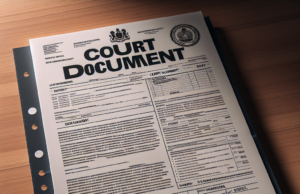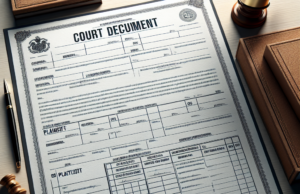
VERMONT DIVORCE LAWS & REGULATIONS UPDATE 2023
A DECADE OF CHANGE: AN OVERVIEW OF VERMONT’S DIVORCE LAWS AND REGULATIONS TIMELINE (2013-2023)
Over the past ten years, Vermont’s divorce laws and regulations have evolved significantly, reflecting the state’s commitment to modernizing its legal framework while ensuring fairness, transparency, and the welfare of families involved in divorce proceedings. This article provides a concise overview of key developments in Vermont’s divorce laws and regulations from 2013 to 2023.
2013: No-Fault Divorce Enhancement
– Enhancement of the no-fault divorce process, allowing couples to seek divorce without assigning blame.
2014: Child Custody Best Interests Focus
– Focus on child custody arrangements based on the best interests of the child.
2015: Marital Property Division Clarity
– Clarity in guidelines for the division of marital property during divorce.
2016: Alimony Consideration Factors
– Establishment of factors for considering alimony awards.
2017: Child Support Calculation Updates
– Updates to child support calculations to adapt to changing financial circumstances.
2018: Mediation Promotion
– Promotion of mediation as an alternative dispute resolution method.
2019: Parenting Plans Enhancement
– Introduction of enhanced parenting plans outlining custody, visitation, and support arrangements.
2020: Digital Divorce Filing Options
– Introduction of digital options for filing divorce petitions, enhancing accessibility.
2021: Collaborative Divorce Emphasis
– Emphasis on collaborative divorce methods to minimize adversarial litigation.
2022: Online Divorce Resources
– Provision of online resources to guide individuals through the divorce process.
2023: Spousal Support Adjustments
– Consideration of adjustments to spousal support guidelines.
Vermont’s commitment to refining divorce laws highlights the state’s dedication to supporting families during challenging times while promoting fairness and justice. As the legal landscape continues to evolve, it remains crucial for stakeholders and the public to engage in discussions that prioritize the well-being of families navigating divorce.
A Brief Guide to Divorce in Vermont
Married Vermont couples who are thinking of separating temporarily or permanently should be aware of the following things:
Vermont State Divorce Laws
Any plaintiff filing for divorce in Vermont must have been a resident of the state for at least six months. In addition, for the case to move forward at least one of the spouses involved must have been a resident of the state for a year or longer.
Grounds for Divorce
Aside from no-fault cases, grounds for at-fault divorce in Vermont include:
• Adultery
• A spouse being imprisoned for three or more years
• Desertion of seven years or longer
• Insanity which has no hope of a cure
• One party has the ability to earn enough money to help maintain their partner but refuses to do so
• Any difficult behavior which makes married life impossible to maintain
Legal Separation
Couples who wish to separate temporarily or permanently without officially filing for divorce in Vermont may enter into a legal separation agreement. These legally binding documents resolve the same issues that are considered during divorce proceedings. A spouse can petition for legal separation on the same grounds as they would for a divorce.
Types of Divorce
When a couple agrees to divorce and on the terms of their separation, they can submit a plan outlining their uncontested divorce in Vermont. If one spouse does not wish to separate or both spouses cannot agree on child custody, alimony or other issues, their uncontested divorce will be resolved by a judge’s ruling.
No Fault Divorce
Couples who wish to file for no fault divorce must first live apart for 6 months and state that there is no chance for reconciliation. No wrongdoing on either spouse’s part must be proved for this kind of divorce in Vermont to be approved.
Steps in the Divorce Process
After a petition for divorce is filed by the plaintiff, the other spouse will be served with a notice of the complaint and have a chance to officially respond. Vermont has no steps for a simplified divorce process allowing spouses to avoid a court appearance. However, a written plan for divorce in Vermont may be submitted for approval. Court-supervised mediation will attempt to achieve this before the court date. Written agreements considering children will be approved without a court hearing.
Spousal Support
In awarding alimony on a permanent or temporary basis, judges will take into account:
• the marriage’s duration
• the age and health of both parties
• inflation’s effects on the cost of living
• how much time the person seeking alimony needs to acquire new skills or education to become self-sustaining
Child Support
Judges are allowed to decide which factors are relevant when considering child support payments, including:
• Travel expenses for both parents to maintain contact with their child
• The standard of living the child experienced during the marriage
• Health insurance costs
Fathers’ and Mothers’ Rights
Gender is not taken into consideration when awarding child custody. Both parents’ emotional and fiscal fitness to take custody of a child will be considered along with their ability to work together for the child’s welfare.



























